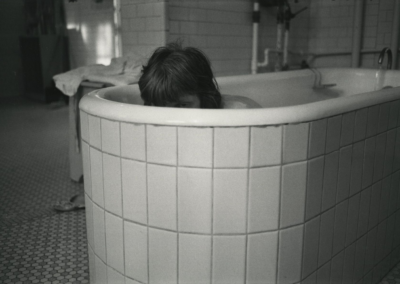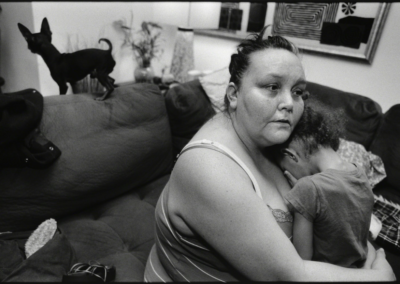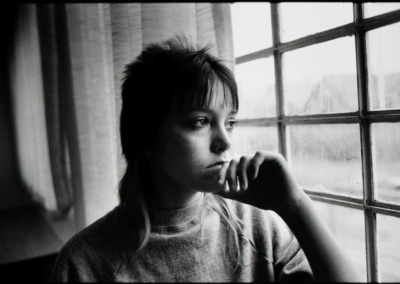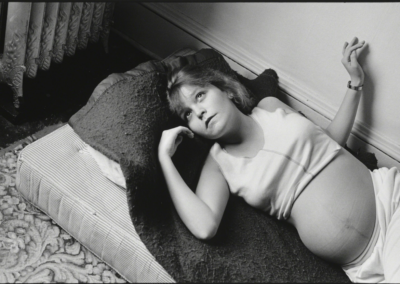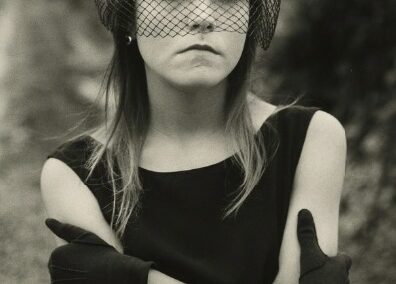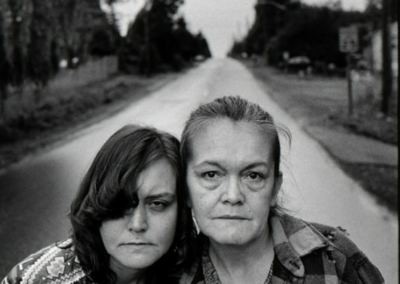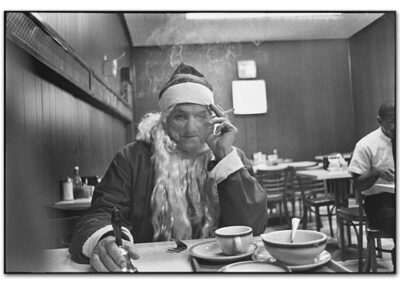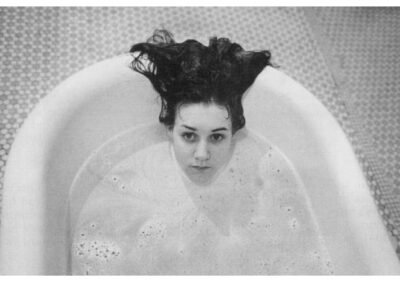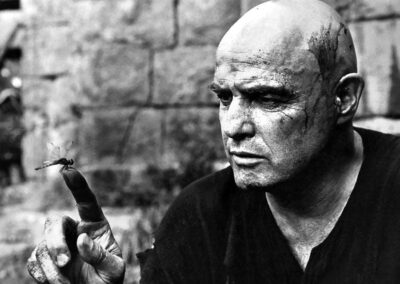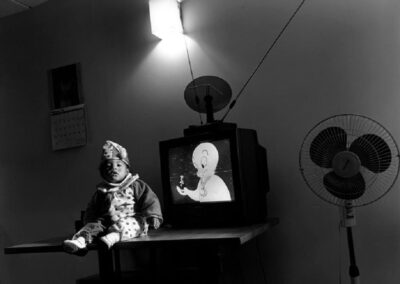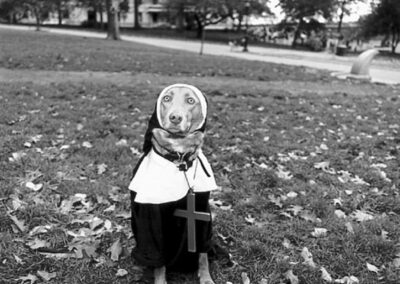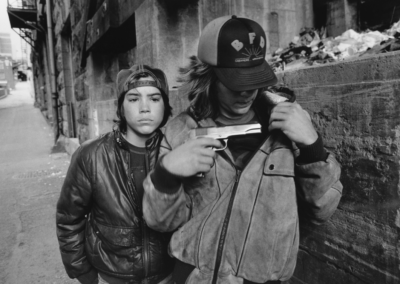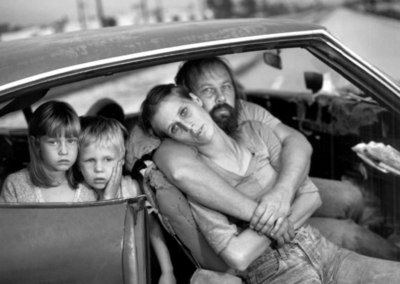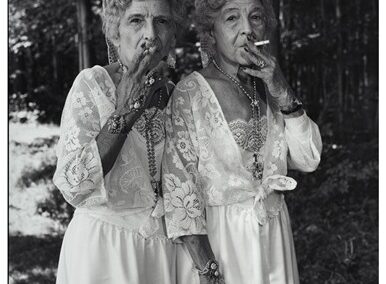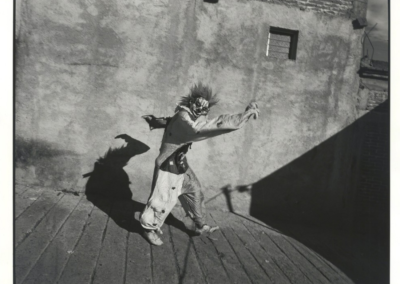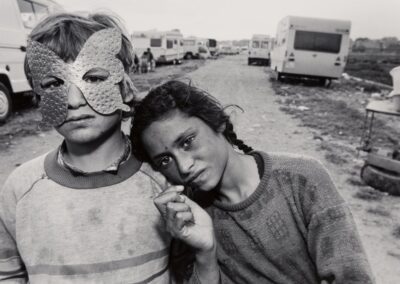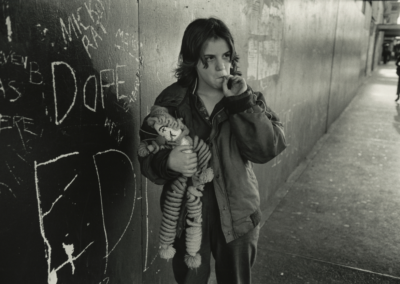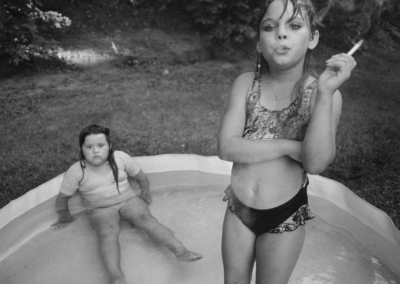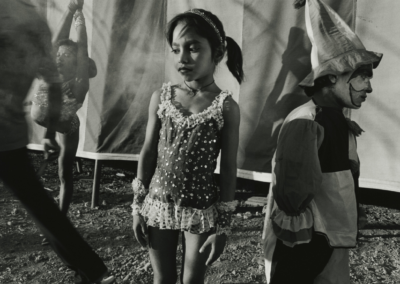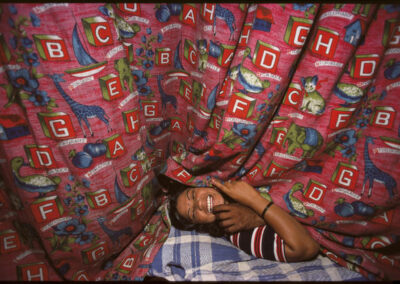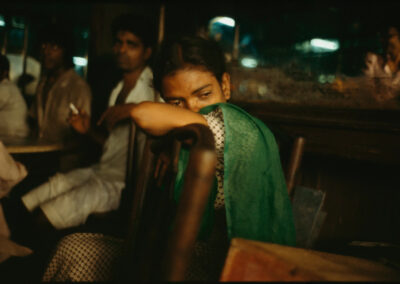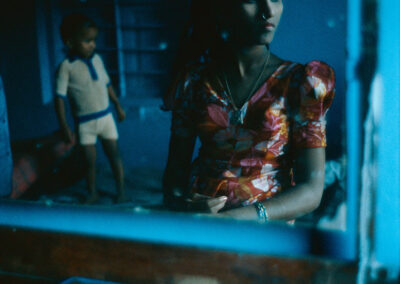Our next Artist You Need To Know is Mary Ellen Mark (1941–2015).
It is difficult to imagine contemporary photography and especially photography in the United States without the contributions and legacy of Mary Ellen Mark. She was an American photographer known for her photojournalism, documentary photography, portraiture, and advertising photography: Mark photographed people who were “away from mainstream society and toward its more interesting, often troubled fringes”. (from here)
Many critics and art historians spoke of Mark as a storyteller, always “highlighting her subjects’ humanity and individuality, she broke down cultural barriers and destigmatized the lives of the social outcasts she photographed, in a striking contrast to [arguably] Diane Arbus’s exploitative portraits.” (from here) Her lens also acted as a tool of social history, whether turned upon the divisive aspects of the Vietnam War, celebrities or so called ‘social outcasts’ as a means to portray contemporary society in the United States with an unflinching eye.
“I think photography is closest to writing, not painting. It’s closest to writing because you are using this machine to convey an idea. The image shouldn’t need a caption; it should already convey an idea.”
Born in 1940 in Philadelphia, PA, Mark earned a Bachelor of Fine Arts in painting and art history from the University of Pennsylvania in 1962. Mark worked for the Philadelphia city planning department for several years before returning to the university to obtain a master’s degree in photojournalism at the Annenberg School for Communication at the University of Pennsylvania (1964). In 1965, Mark was awarded a Fulbright Scholarship to photograph in Turkey for a year (this became her first book Passport, published in 1974). On this tripe she also visited England, Germany, Greece, Italy, and Spain, photographing all the while.
Upon her return, the artist moved to New York, where she began to create photo essays for numerous publications including Life, Rolling Stone, The New Yorker, New York Times, and Vanity Fair. She was a member of Magnum Photos between 1977 and 1981.
The images above are from one of the more iconic bodies of work produced by Mark : Streetwise (1983) and Tiny : Streetwise Revisited (2015). Streetwise has been described as “an intimate portrait of teenagers who survive as pimps, prostitutes, panhandlers and small-time drug dealers living on the streets of Seattle.” Mark’s site offers many more images of this series as well as erudite and honest words about the project and the people whose stories she shares here.
Important bodies of work by Mark – or significant stories she tells in photographic form include : Ward 81 (originally published in 1979, documenting life in a women’s security ward of the Oregon State Mental Institution, the only locked ward for women in the state. Mark spent over a month living with the residents in the ward): Falkland Road : Prostitutes of Bombay (1981, where Mark photographed “women and patrons on the internationally notorious street of prostitutes, Falkland Road, in Bombay” : Indian Circus (1993): A Cry for Help : Stories of Homelessness and Hope (1996, focused upon homeless children and their families living in the H.E.L.P. – Housing Enterprise for the Less Privileged – shelters in New York state): Mary Ellen Mark : American Odyssey (A broad survey of photographs taken across the United States from 1963-1999, published in 1999): Seen Behind The Scene : Forty Years of Photographing On Set (2008) : Man And Beast : Photographs from Mexico and India (2014): and the posthumously published Mary Ellen Mark : The Book of Everything (2020) which is a three-volume set with over 500 photographs spanning Mark’s six-decade career.
All of the links in the preceding paragraph will take you to pages where there are many images from and more information about those series : this will offer a more extensive – and more impressive – overview of Mary Ellen Mark’s legacy.
Her words: “I feel an affinity for people who haven’t had the best breaks in society. I’m always on their side. I find them more human, maybe. What I want to do more than anything is acknowledge their existence.” (from here)
Mark published approximately eighteen collections of her work in her lifetime and several significant anthologies have been produced since her passing. Her photographs have been exhibited at galleries and museums worldwide : her many awards include three Robert F. Kennedy Journalism Awards, three fellowships from the National Endowment for the Arts, the 2014 Lifetime Achievement in Photography Award from the George Eastman House and the Outstanding Contribution Photography Award from the World Photography Organization. Mark was also awarded a Guggenheim Fellowship and a George Polk Award for photojournalism.
Marks’ artworks can be found in the collections of the Cleveland Museum of Art, the Los Angeles County Museum of Art, the Museum of Fine Arts in Houston, Centre Georges Pompidou, Corcoran Gallery of Art, Detroit Institute of Arts, MOMA (NY), The Hasselblad Foundation, Philadelphia Museum of Art and many, many others around the world.
A more extensive listing of her accomplishments – including Mark’s many solo and group exhibitions – can be seen here.
When you visit her site, you’ll see that Mark was as able with words as she was with her camera: “I just think it’s important to be direct and honest with people about why you’re photographing them and what you’re doing. After all, you are taking some of their soul.”
Mark died on May 25, 2015 in New York, NY, at the age of 75. The Washington Post summed up her aesthetic as follows: “All of her subjects, no matter how down and out, looked straight back at Ms. Mark, and her camera never flinched. With one fearless project after another, she became one of the preeminent documentary photographers of our time.”
Much more of her work and a more complete of her exhibitions and publications can be seen here : this site not only offers many images of Mary Ellen Mark’s work but also a variety of texts – from the artist as well as several collaborators – that augment the stories Mark shared with us over sixty years of taking photographs.

